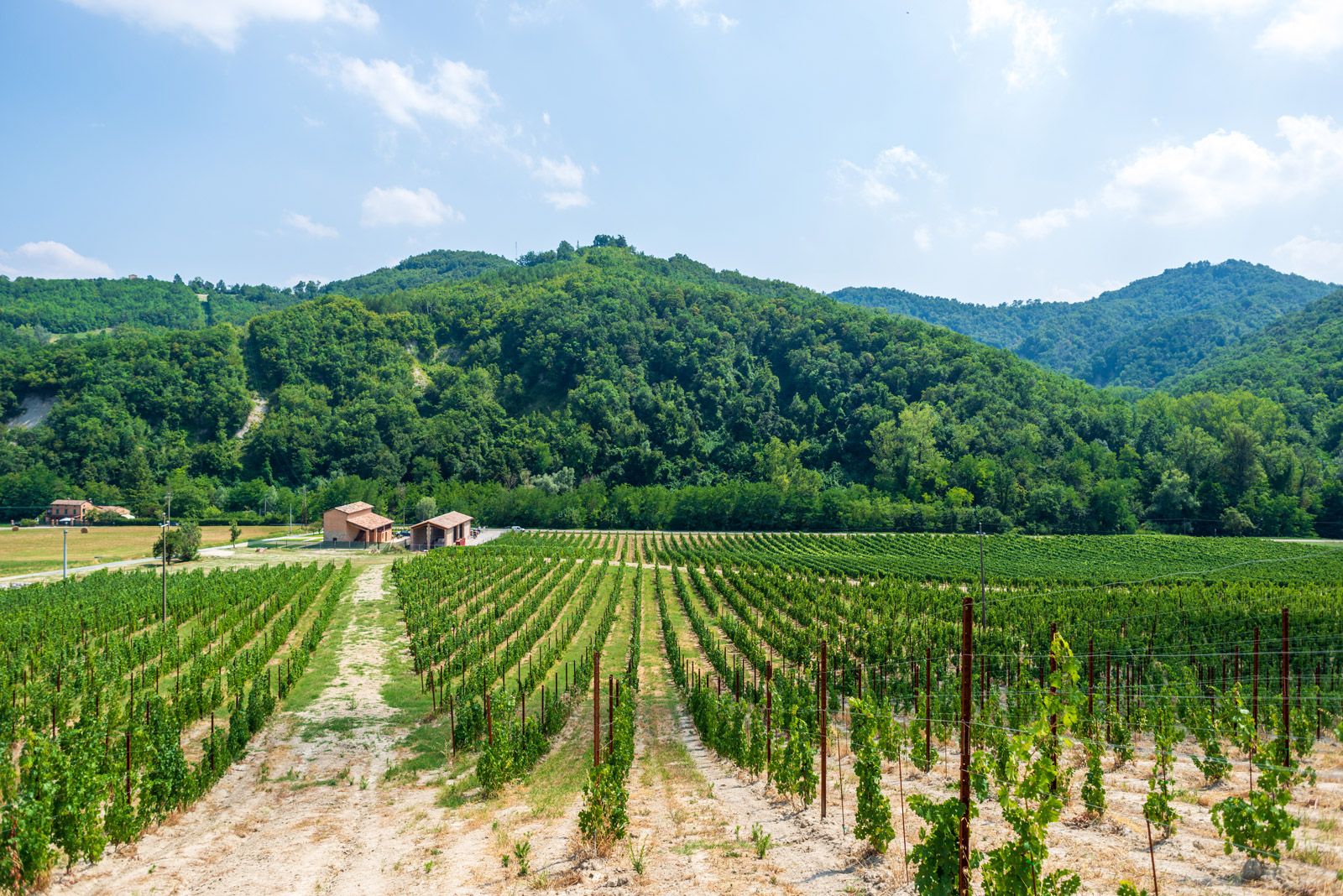
The vineyards of Tenute Venturini Foschi
It only takes about thirty minutes by car from Parma, heading west, to find yourself immersed in the middle of the vineyards of a very young company that is at the same time steeped in history: Tenute Venturini Foschi.
The company, founded just six years ago, in 2016, by Pier Luigi Foschi and Emanuela Venturini, has once again given viticultural lustre to some of the land that stretches between the hills of Noceto and Medesano. Lands rich in history – just think of the proximity of the Via Francigena – and in rural tradition, where time slows down and nature dictates the rhythms.
With full respect for this unique territory, the company has not only opted for organic farming, but has also carried out an in-depth and detailed study of the climatic and soil characteristics in order to find a perfect harmony between location and grape varieties, capable of expressing themselves in wines of the highest quality.
The vineyards of Tenute Venturini Foschi have expanded over time, from a small initial plot of land, thanks to a series of acquisitions and, today, extend over about twenty-seven hectares, home to both native and international red and white grape varieties. The ambition, in the very near future, is to support the specific potential of all the micro-zones of the estates in order to produce different types of wine, ranging from still reds to sparkling wines, from still whites to raisin wines.
Fonio
The history of the company starts with Fonio, the very first vineyard planted: with an extension of three hectares, it was dedicated to the cultivation of Malvasia di Candia Aromatica, one of the most widespread varieties in Emilia and especially in the hills of the provinces of Parma and Piacenza, where it finds the best conditions for its ripening. The vineyard is located on a medium altitude hillside, in a micro-area which, thanks to good ventilation, guarantees an adequate level of humidity and avoids the danger of mould in the grapes. The eastern exposure, which softens the high temperatures, and the neutral clay soil allow for the optimal cultivation of Malvasia di Candia Aromatica, favouring the conservation of the aromatic components of its grapes.
From the harvesting of Malvasia di Candia Aromatica grapes, vinified in purity, the first wines of the company were born, called Gemma and Gemma Gentile, dry and semi-dry respectively, obtained thanks to the use of 50% of overripe grapes and a few months of ageing in terracotta amphorae.
In 2018, Tenute Venturini Foschi acquired Villa Fontana, another plot of some thirty hectares that became the main body of the company. It includes a historic villa from the 18th century – from which it takes its name -, a vast wooded area, including one hectare of centuries-old parkland with magnificent specimens of oak, cedar and ginkgo biloba, and a vineyard area of around fourteen hectares. The gently sloping, east-facing land slopes down from two hundred and fifty to two hundred metres in altitude. There are substantial climatic differences between the upper and lower parts of the valley: in the former the sun exposure is greater, with warmer temperatures and a dry climate, while the latter is more shaded, with milder temperatures and high humidity. In the latter, the conditions proved to be optimal for planting the Pinot noir and Chardonnay grape varieties for the production of a classic method sparkling wine.
The soils, which are very deep, medium-textured, rich in limestone and moderately alkaline, ensure a slow and balanced ripening of the grapes, which can impart minerality, aromas, fine structure and elegance to the wine. Because of these characteristics, which make the area particularly suitable for growing wine grapes, the plan is to plant both red and white varieties.
The Ema farm and the Terre Alte plot were also recently purchased.
Ema, the second largest (about ten hectares) of all the estates, is a plateau two hundred metres above sea level where the climate is warm and breezy, with the only exception of a small slope that is shaded by the neighbouring woodland. The soils are loamy, non-calcareous and slightly acidic. All these conditions suggest that the grapes can reach full ripeness, giving the wines body and aromatic intensity.
The nine hectares of vineyards will be planted with both indigenous red grapes (Barbera) and international varieties (Cabernet Franc) in the warmer and sunnier areas, and with white grapes such as Chardonnay and Sauvignon Blanc in the cooler and shadier areas.
Finally, Terre Alte, whose name derives from its altitude, since the four-and-a-half-hectare plot is located at 450 m above sea level. Here, the eastern exposure, the cool temperatures, the significant temperature range between day and night and the moderately alkaline loamy soils with a good amount of limestone create the optimum conditions for very late ripening of the grapes, with the development of a marked aromatic complexity and a strong mineral and acid component, all of which are ideal characteristics for planting the Pinot noir and Chardonnay grape varieties for making a classic method sparkling wine.




Estebanblolf
baclofen price in india